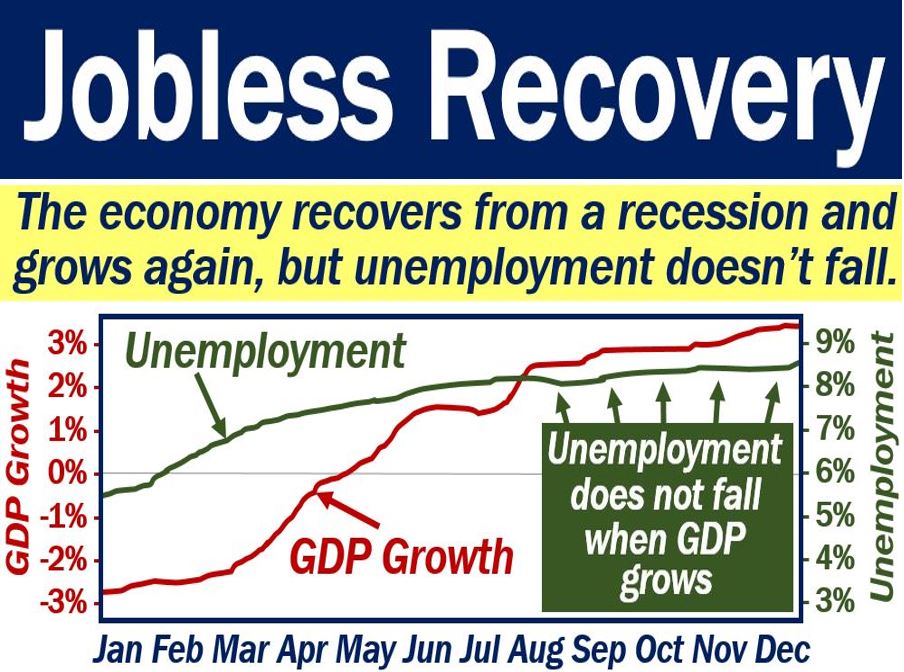A jobless recovery occurs after a recession when GDP starts growing again, but unemployment remains stubbornly high. We also refer to the phenomenon as jobless growth. In some cases, the rate of unemployment continues to rise even when GDP is growing again. GDP stands for Gross Domestic Product.
Economists say that a jobless recovery may be due to businesses continuing to be cautious. During the recession, companies learned to tighten their belts and be careful. Subsequently, after the recession is over, that caution still lingers for some time.
Cautious companies, rather than hiring new workers, prefer to add hours to their existing employees.
According to BusinessDictionary.com, the term refers to:
“An economic phenomenon where after experiencing recession, the macroeconomy starts growing again, while unemployment levels remain constant or continue to rise.”
The American recession of the 1990s, for example, preceded a jobless recovery. That recession officially ended in the first quarter of 1991.
However, it was not until the second and third quarters of 1992 that unemployment began to fall.

Jobless recovery and automation
For decades, economists have disagreed on what the causes of a jobless recovery are. Many argue that rising productivity through automation is the principal cause.
Automation means using computers, robots, and artificial intelligence to produce things.
With automation, companies can get greater productivity. Productivity refers to production per worker per hour, day, week, etc. When companies embrace automation, they replace workers with smart machines.
If many companies across the country have introduced automation into their systems, they can produce more with the same number of workers. In fact, many can produce more with fewer workers.
Other economists, however, insist that blaming automation is an example of the Luddite fallacy. They believe that jobless growth is the result of structural changes in the job market, which leads to unemployment. A Luddite is somebody who is against new working methods, especially new machines.
In other words, economists who don’t blame automation say that workers change jobs, and that is what causes the problem. Maybe workers do not just change jobs, but also move into new industries, they add.
Jobless recovery and industrial consolidation
Most jobs in the majority of economies come from small businesses. If small businesses are not emerging at the rate they did before, unemployment will not decline.
With increased industrial consolidation, there are more monopolies and oligopolies in our economies. We have a monopoly when just one company produces and sells a product. We have an oligopoly when very few companies make and sell a product.
With more monopolies and oligopolies around, it is much harder for startups to get off the ground.
Therefore, if fewer small companies are entering the marketplace, unemployment cannot decline. This is what some economists argue causes a jobless recovery.
What is a jobless recovery?
In this CBS News video, Conor Dougherty of The Wall Street Journal, explains what a jobless recovery is.
